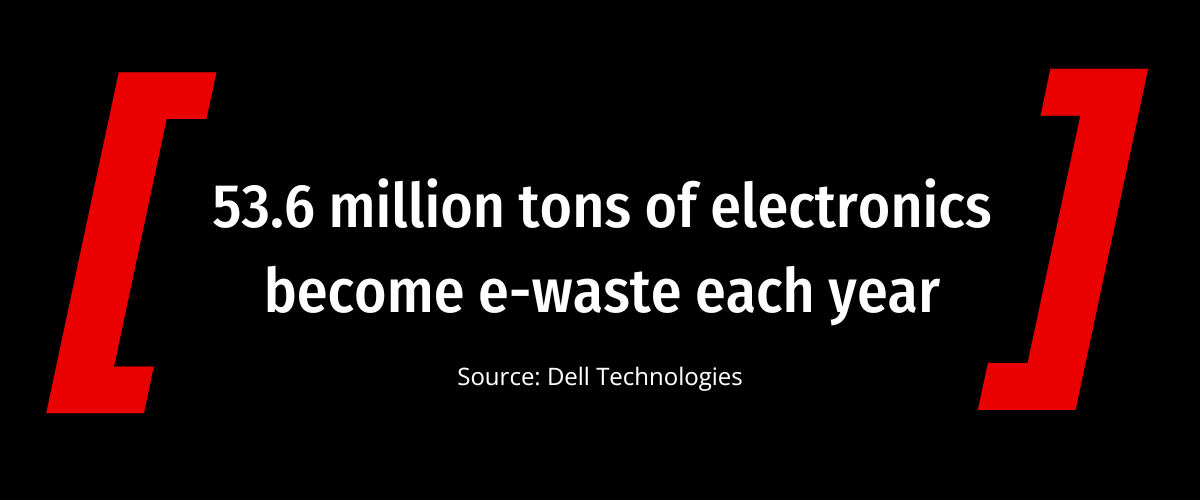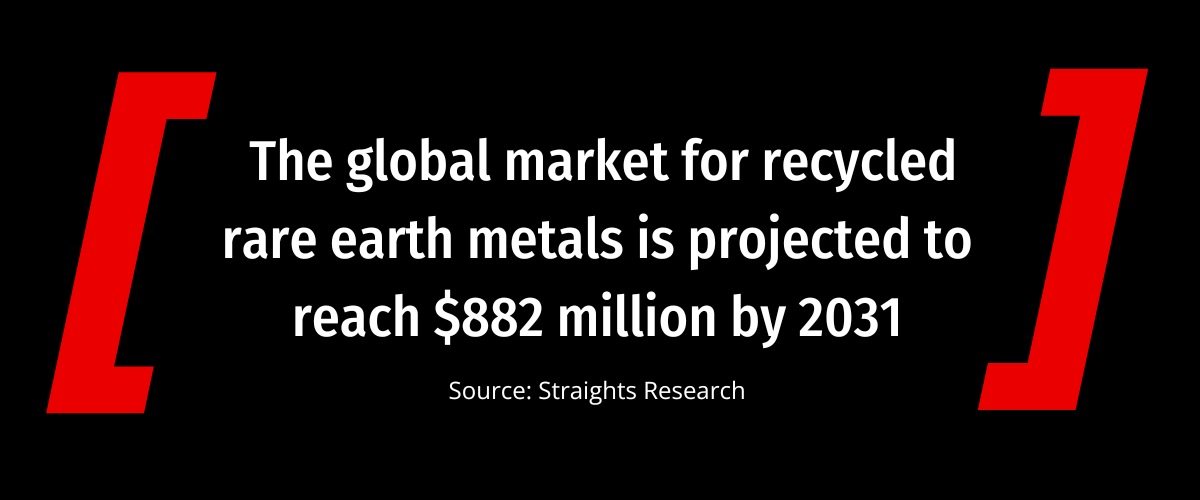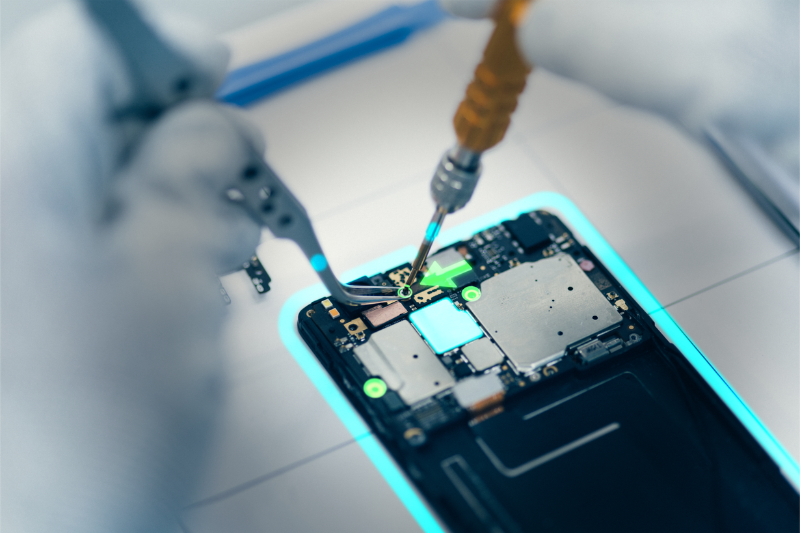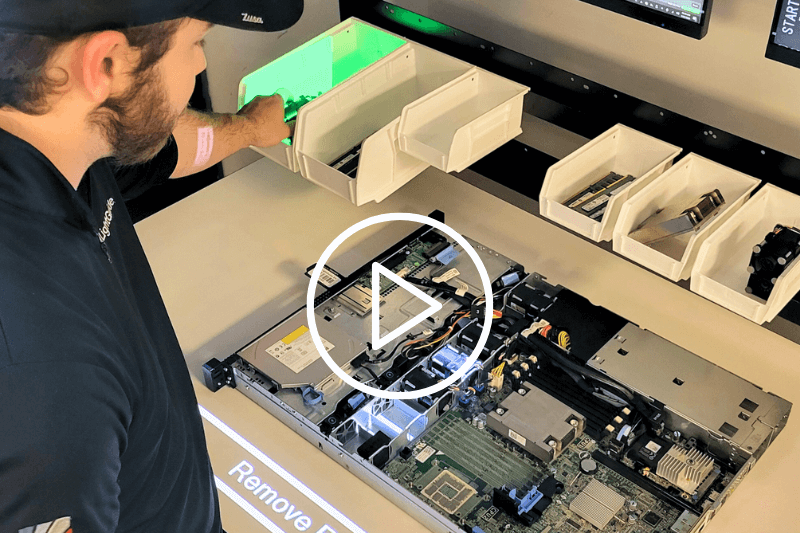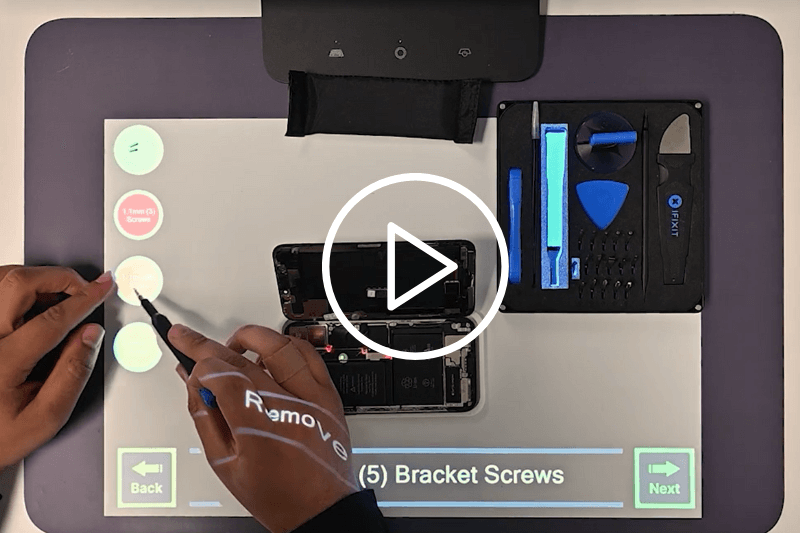
The electronics industry is under increasing pressure to reduce its carbon footprint and become more sustainable. As companies strive to balance environmental concerns with business performance, electronics recycling has become a key area of focus for many manufacturers.
Using recycled materials to produce new electronic devices is a strategic way to conserve resources, strengthen supply chain resilience, foster innovation, and drive business growth. However, the path to creating a more sustainable electronics manufacturing ecosystem is not without its challenges. Fortunately, advanced manufacturing technologies are making it easier for companies to safely recycle, recover, and reuse materials from discarded electronic devices.
Continue reading as we explore the current state of electronics recycling, and the innovative strategies companies are using to pave the way to a greener, more sustainable future. Plus, learn how advanced manufacturing technologies can be used to scale e-waste management and material recovery efforts.
IN THIS ARTICLE
What is Electronics Recycling and Why Is It Important?
The Current State of Electronics Recycling in Industry
Technologies Transforming the Future of Electronics Recycling
What is Electronics Recycling and Why Is It Important?
Electronics recycling, also known as electronic waste recycling or e-waste recycling, is the process of disassembling used electronic devices and sorting components into their various parts so that valuable materials can be extracted and reused in new electronic devices.
The issue of electronic waste (e-waste) is substantial, resulting in a depletion of essential raw materials that hold significant economic value. This loss is estimated to be at least $57 billion annually, encompassing crucial resources like tungsten, cobalt, gold, and various other rare earth elements that are integral to electronic device production. This further emphasizes the need for more efficient and sustainable approaches to e-waste management.
The Current State of Electronics Recycling in Industry
As consumers demand more eco-friendly products and governments introduce regulations that emphasize sustainability, electronics manufacturers are faced with the challenge of balancing demand for new products with the need to reduce their environmental impact.
Short Product Life Cycles are Contributing to Higher Levels of E-waste
According to Dell Technologies, 53.6 million tons of electronics become e-waste each year, making it the fastest growing waste stream. The rapid pace of technological advancement and short lifespan of electronic devices are contributing to this growing problem.
As consumers upgrade to the latest technologies and replace outdated electronics with newer models, hundreds of millions of devices are discarded. According to a report from United Electronics Recycling, more than 100 million cell phones, 41 million computers, and 20 million TVs end up in U.S. landfills each year. This cycle of consumption contributes to the substantial volume of e-waste being generated annually, which can contain hazardous substances like lead, mercury, and lithium that contaminate soil and water.
However, amid this challenge lies an opportunity. Discarded electronic products offer a readily available source of valuable components and rare earth metals that can be recycled and used to manufacture new electronic devices.
Circular Economy Models Reduce E-Waste and Minimize Supply Chain Disruptions
While the electronics industry confronts the mounting issue of e-waste, it faces an equally daunting challenge in the form of supply chain disruptions. These disruptions have exposed the electronics industry to the ethical and environmental risks associated with mining rare earth metals, making it more difficult for manufacturers to obtain the resources they need to produce electronic components.
To address this challenge, electronics manufacturers should look to create a closed-loop supply chain in which used or end-of-life products can be refurbished, remanufactured, recycled, or otherwise reintroduced into the production process. Unlike the traditional linear economy, which follows a “take-make-dispose” pattern, the circular economy promotes a closed-loop approach where resources are continually reused, recycled, and regenerated to minimize waste and maximize the value of products and materials.
Companies like Microsoft have already created programs and initiatives centered around this concept. Microsoft Circular Centers help deliver on its commitment to Zero Waste processing and routing of decommissioned severs and hardware components from data centers to their next useful lives. By integrating circularity into its cloud supply chain planning, Microsoft’s Circular Centers initiative creates sustainable paths for every hardware part into and out of its data centers globally.
By adopting a closed-loop supply chain that uses recycled rare earth metals, electronics manufacturers can transform e-waste into a sustainable resource, improve supply chain resilience, and reduce their environmental footprint.
This approach offers both environmental and economic benefits. According to a recent report from Straights Research, the global market for recycled rare earth metals is projected to reach $882 million by 2031. This suggests that there is a growing demand for recycled rare earth metals, and that electronics manufacturers who invest in recycling these materials will be well-positioned to meet this demand.
RELATED ARTICLE: Electronics Remanufacturing Explained
Lack of Standardized Electronics Recycling Processes Pose Safety Risks

While the concept of creating a closed-loop supply chain from recycled electronics is straightforward in theory, incorporating this strategy into daily operations can be quite complex. Despite its significant potential, electronics recycling is an intricate process that poses several safety risks and considerations that must be carefully managed.
Hazardous Materials Handling
The disassembly and disposal of electronic devices must be meticulously managed to avoid exposing workers to dangerous chemicals and flammable materials, such as lithium-ion batteries, that can overheat or explode if mishandled. Electronic devices can also be electrically charged, even when they are turned off. As such, workers must take precautions to avoid electrical shock.
Fire and Explosion Hazards
The increasing prevalence of lithium-ion batteries in various consumer products and electronic devices, ranging from smartphones to electric vehicles, has sparked concerns about their environmental and worker safety impacts.
Battery fires caused by lithium-ion batteries have become increasingly common in recent years, particularly at electronic waste and recycling plants. In 2017, a prominent consumer electronics company’s factory caught fire due to faulty batteries. Since then, there have been numerous other incidents linking battery issues to fires. In 2022 alone, U.S. and Canadian media sources reported 390 fires caused by lithium-ion batteries at electronic waste and recycling plants.
Improper Sorting and Separation
Properly sorting and separating electronics components is also a crucial component of the electronics recycling process, as it allows companies to maximize resource recovery of valuable rare earth metals while minimizing environmental exposure to harmful materials caused by improper disposal.
Considering these safety risks, it is crucial for e-scrap recycling facilities to adhere to stringent safety protocols, train workers how to safely recycle electronic devices and invest in proper equipment.
Technologies Transforming the Future of Electronics Recycling
While most companies have sustainability initiatives in place, many face significant challenges when it comes to improving recovery margins from diverse streams of waste. As electronics manufacturers focus on identifying solutions to these challenges, companies are finding innovative ways to leverage advanced manufacturing technologies to make electronics recycling programs efficient, safe, and effective.
Robotics
One advanced manufacturing technology being used in electronics recycling is robotics. Robots can be used to efficiently disassemble electronic devices and sort component parts so that valuable materials inside those parts can be extracted and repurposed. This can help to reduce the risk of human exposure to hazardous materials, improve the accuracy of materials sorting, and increase the efficiency of electronics recycling.
Artificial Intelligence and Machine Learning
Artificial intelligence (AI) and machine learning (ML) can optimize electronics recycling by delivering intelligent insights and automating tasks. For example, AI-powered robots can accurately identify and disassemble various types of electronics components, helping companies recycle more efficiently and sustainably.
According to The Verge, a team of researchers from the University of Buffalo, Iowa State University, Idaho National Laboratory, and e-waste recycler Sunnking, is developing software that would allow robots to identify different smartphone models in the waste stream and determine how to harvest high-value components. Using grant funding from the US Department of Energy, the project aims to enable robots to look up the internal anatomy of each phone and disassemble it accordingly.
Augmented Reality
While robots are better suited for repetitive tasks that can be physically demanding or dangerous for people, other aspects of electronics recycling require a human in the loop. This is where augmented reality (AR) comes into play. AR seamlessly blends cutting-edge technology with human expertise, allowing workers to harness the power of augmented intelligence to maximize their performance. Here’s how:
Real-time Guidance for Improved Safety, Quality, and Efficiency
Real-time AR guidance is a game changer when it comes to improving the safety, quality, and efficiency of manual electronics recycling and refurbishment processes.
Using AR guidance, companies can transform complex recycling instructions into a series of easy-to-follow visual cues that guide workers through intricate electronics recycling processes, optimizing the performance and efficiency of every employee. Whether the process entails disassembling devices or identifying and sorting components, AR helps employees identify different types of electronic devices and components ensuring each step is executed optimally. This reduces errors, enhances material recovery, and contributes to a safer, more efficient recycling process.
RELATED CONTENT: AR-Guided Rack Server Refurbishment
Enhanced Training & Workforce Development
Leveraging projected AR workstations, companies can create interactive training experiences that simulate real-world scenarios, enabling employees to gain hands-on experience in a safe and controlled environment. This reduces the learning curve for new hires and provides a continuous learning path for ongoing workforce development.
Enhanced Traceability for Improved Measurement
In addition to providing technicians with visual guidance, sophisticated AR software solutions can provide companies with the ability to capture valuable data, such as cycle times, photos, material weights, and more. This enhanced traceability offers companies deeper insights into the impact of sustainability initiatives, enabling them to assess performance, set targets, and drive continuous improvement.
Innovating for the Future of Electronics Recycling
In a world where resources are finite, it’s critical to make use of the resources we have to create a sustainable future. As companies grapple with the challenges of electronic waste, advancements in technology are making it possible to scale recycling programs in a safe, effective, and efficient manner.
With end-to-end solutions for disassembly, material recovery, and production, the benefits of these technologies are far-reaching. Through the strategic use of robots and AR guidance, companies are building quality into their electronics recycling processes and increasing recovery margins to create a reliable closed-loop supply chain of recycled materials that can be used in the next generation of smart devices.
Ready to optimize your electronics operations? Take the next step and explore end-to-end AR solutions for error-free electronics assembly, repair, and recycling.

Ready to Transform Your Recycling Processes?
Contact us today to schedule a personalized demo of LightGuide’s projected AR solutions.



